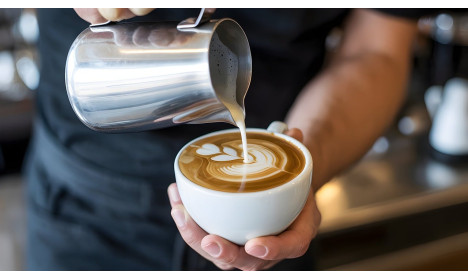Filter Blogs By Blogger : Paweł Prus
The history of the mug – how have coffee utensils changed over the centuries?
The history of the mug is both long and interesting. From clay vessels, through richly decorated ceramics from various eras, to modern thermal mugs. A mug, although a seemingly simple object, plays an important role in everyday life and culture of many societies. Its evolution is a testimony to changing trends, technologies and aesthetic tastes. The history of the mug described in our article will certainly surprise you!
History of the mug: prehistoric origins
The history of the cup is a fascinating journey that goes back thousands of years, to prehistoric times. People have always needed vessels to store and consume drinks, which led to the invention of various forms of cups. Archaeologists have discovered thatthe first clay vessels were made around 10,000 BC. They constitute some of the oldest evidence of developed material culture. People began to shape clay into various shapes and then burn it in bonfires, which made them durable. These first cups were mainly used to store liquids and food, which made everyday life much easier. Over time, these techniques improved, allowing for the creation of more complex and functional vessels.
In addition to clay, prehistoric cups were also made of other natural materials. Wood, stone and pottery were widely used due to their availability and ease of processing. Wooden cups were especially popular among peoples living in forests where wood was abundant. Stone cups were more durable but more difficult to make, which made them less common. Ceramics, in turn, gained popularity thanks to the possibility of creating various shapes and decorations.
History of the mug: evolution of materials and techniques
The history of the mug is a fascinating example of the evolution of materials and techniques over the centuries. From humble beginnings, when the first vessels were made of natural materials such as wood, stone or ceramics, mugs have come a long way, becoming an integral element of everyday life.
The first porcelain cups appeared in China in the 7th century. Porcelain, known for its delicate white and smooth texture, revolutionized the way people approached drinking vessels. Chinese craftsmen mastered the technique of making porcelain by combining kaolin (white clay) with other raw materials such as quartz and feldspar, which allowed them to achieve exceptional durability and aesthetics. Porcelain cups were often decorated with intricate patterns that not only emphasized their beauty, but also had symbolic meaning.
Porcelain reached Europe in the 18th century, becoming a symbol of luxury and sophistication. European elites quickly appreciated the elegance and durability of porcelain cups, which made them a popular element during banquets and elegant receptions. At that time, porcelain was highly valued and was often imported from China, which made it even more exclusive. European craftsmen, especially in Germany, began their own porcelain production, imitating Chinese techniques and designs. Places such as Meissen became known for the production of high-quality porcelain cups, which were decorated with gold and colorful motifs, serving as symbols of social status.
History of the modern mug
However, the history of the mug does not end with the Enlightenment. On the contrary: it is gaining momentum. The industrial revolution of the 19th century brought radical changes in the production of cups. The introduction of new technologies and machines enabled mass production of cups in various shapes and sizes. Moreover,industrial production lowered costswhich made mugs more accessible to the general public. Materials such as glass, stainless steel and new types of ceramics began to be widely used, andmugs quickly transformed from a luxury good into an everyday utilitarian item. Thanks to mass production, mugs could be produced on a large scale, which allowed for their wide distribution and variety in available designs and styles.
The present in the history of the mug is also the time when thermal mugs for coffee and tea appeared, which became extremely popular all over the world. Made from materials such as stainless steel and special plastics, these modern vessels are designed to keep your drink hot for longer, making them perfect for taking your favorite drinks on the go. In addition, thermal mugs are often equipped with tight lids, which prevents the liquid from spilling.
Modern printing technology not only enables personalization, but also maintains high quality and durability of the product. As a mug manufacturer, we offer our clients mugs with your own print, which gives you the opportunity to personalize and create a unique product. Our printed mugs are very popular among companies as elements of their marketing strategy, but also among individuals looking for an original gift.
Summary
The history of the mug, from simple clay vessels to advanced thermal mugs, illustrates how everyday objects can be a mirror of the times in which they were created. Mugs, over the centuries adapting to the needs and technological possibilities of different eras, have become not only a tool for everyday use, but also an artistic object and a socio-cultural symbol. Nowadays, a mug is no longer just a container for drinks, but also a carrier of individual style, ecological values and a testimony to technological progress. Do you want to become part of this fascinating history of the mug? Visit our website! At CoffeeCups you will find a wide range of cups, each with its own unique story and character. Welcome!









